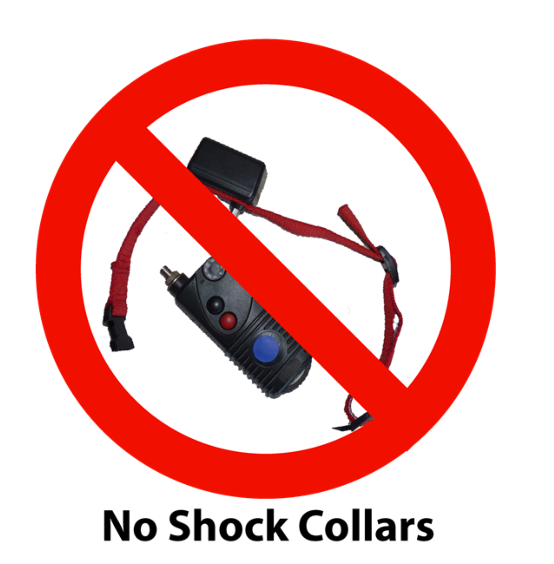Hoof Care Options for Fearful Equids
by Michelle Martiya When people adopt or rescue fearful and feral equids, one of the most pressing issues the new owners face is the need to trim their feet. These animals often come with feet that are too long, which can be painful and cause long-term musculoskeletal problems. Much like dogs accepting nail trims, hoof trims can be one of the most challenging procedures for an equid to accept, and the need for care will frequently happen before training for this procedure is complete. Fortunately, there are a few things… Continued
Identifying Positive Reinforcers for the Individual
Anna Bradley explains why using food as a positive reinforcer in training is not bribery and examines alternative options for dogs who may not always be so food driven. While I would say there is, in general, a much wider appreciation of the role of rewards in animal training and behavior these days, I also believe—and it is certainly my experience—that pet guardians do not always fully understand the power of positive-reinforcement training. For example, I have had clients who consider the use of rewards to be “bribery.” There may… Continued
Eat, PURR, Love
Andrea Carne investigates how feeding regimes can help meet feline behavioral needs, particularly those of indoor cats, while deliberating the findings of a recent study on the same topic. Read the next sentence very carefully (and with a large pinch of salt): Feeding your cat one meal a day might be best. I can almost hear the gasps from cat guardians across the world! “Feed my cat once a day? Are you crazy?” I hear you say. “What do I do when I get the 5 a.m. ‘wake up and… Continued
Working With Undersocialized Kittens and Cats
by the PPG Cat Committee The period between 2 and 7 weeks, often referred to as the sensitive period for socialization, is a crucial time in a kitten’s social development. During these weeks, kittens are particularly open to new experiences, which makes it the ideal time for them to learn about their environment, build trust with humans, and interact positively with other animals. Kittens who experience positive interactions during this period are more likely to adapt well to new situations later in life. Although this early window is an especially… Continued
Book Review: The Forever Dog by Rodney Habib and Karen Shaw Becker
by Don Hanson When most of us add a pet as a valued family member, it is with a desire for that pet to live a healthy, enjoyable, and long life, which is the philosophy behind The Forever Dog. Every pet I’ve had has motivated me to learn everything I can to make that happen. Unfortunately, a lot of harmful information about pet health, wellness, behavior, and nutrition is perpetuated as “wisdom,” when its goal is to give a false sense of security, so pet guardians unknowingly purchase products that shorten their… Continued
Fear of the Unknown and How to Manage Uncertainties in Life—Work on Taking Back Control!
We cannot escape fear. We can only transform it into a companion that accompanies us on all our exciting adventures. —Susan Jeffers by Niki Tudge What Is Anxiety? We all react to stressful situations different ways. It’s a normal biological reaction to experience anxiety or fear when faced with stressful situations. However, long-lasting feelings of extreme anxiety can and will interfere with our daily activities and can be indicative of an anxiety disorder. Anxiety cannot be defined as one isolated condition. It has many faces and can have hundreds of… Continued
Six Ways a Newsletter Can Help You Bark Up the Right Tree
by Veronica Boutelle As a dog trainer, you want a reliable way to connect with your clients, attract new ones, and promote your work. In our experience, there is no better marketing staple to achieve this than the humble newsletter. While social media platforms offer quick bursts of information, newsletters provide a unique opportunity to build deeper relationships, share expertise, and nurture a loyal client base. Here are six reasons to add a newsletter to your marketing toolkit: 1. The Personal Touch Most dog trainers today spend a lot of… Continued
Celebrating Life Together – The Votes Are In!
The Pet Professional Guild has announced the results of the public voting portion of the Community Outreach Competition! Thank you to all who participated in the PPG Advocacy Event and Community Outreach Competition – Raising Awareness for Humane, Ethical, and Effective Pet Training and Care! Whether you presented at or attended the Celebrating Life Together Virtual Educational Event (or purchase the conference recordings package), entered into the outreach competition, or voted for your favorite entry, by joining forces to be part of the solution, you helped provide the antidote to… Continued
Do’s and Don’ts: A Guide for Assistance Dog Trainers
by the Pet Professional Guild Assistance Animal Division Do Not Touch Someone’s Assistance/Service Dog Without Prior Consent You could distract the dog performing an alert or monitoring task. The dog could also become distracted and miss cues from the handler. You wouldn’t handle someone’s medical equipment, so please respect that an assistance dog is also a medical aid. Do Not Offer to Handle the Dog During Times of Training We need the handler to be confident and skilled in their handling. To work in tandem for the individual’s health is… Continued
Therapeutic Diets for Companion Animals—Is the Investment Justified?
By Sandra Grossmann A therapeutic diet, also called a prescription (Rx) diet, is one that is formulated to meet a specific need or to prevent a disease from reoccurring or getting worse. Pet owners can purchase therapeutic diets only via a licensed veterinarian, who must diagnose the disease and write a prescription. Do You Legally Need a Prescription? One major pet food company owns a patent for the name “prescription diet.” Competing pet food companies are forced to use a different name, for example, “therapeutic diet” or “veterinary diet,” to… Continued
The Four Pillars of Powerful Dog Training Packages
By Veronica Boutelle and Harriet Alexander As an R+ dog trainer, your role is so much more than teaching cues and marking behavior. You’re shaping lifelong relationships between dogs and their people. A key question we repeatedly hear at dogbiz is, “How can I motivate clients to keep going after the first training session?” One answer lies in revolutionizing your approach to training packages. If you haven’t already, it’s time to say goodbye to those quick consultations and scattered follow-ups. True behavior transformation comes from sustained, structured engagement. The more… Continued
Effective Desensitization
by Anna Bradley Desensitization is a tool used routinely in the behavioral rehabilitation of animals with many varied emotional responses, but primarily those centered around anxiety and fear. Several terms have in recent years become almost “bandied” about—used in regular discourse in doggy chat rooms, forums, social boards, social media groups and the like, and desensitization is just one of them. The result is that, while professionals use the technique as it should be applied, it can be less well understood, so its effectiveness “watered down” or even completely incorrectly… Continued
Variations Within Disabilities
Never be afraid to ask a client how you can best support them! by the Pet Professional Guild Assistance Animal Division When working with someone who has a disability, it’s important to acknowledge their limits within that disability. Those limits will vastly vary, even with individuals with the same diagnosis, so it’s imperative to have a conversation with that person to understand exactly what their limits may be. But what about when those limits seem to change? What if they were able to do something two days ago during your… Continued
Escape-Proof Crates: If They Sound Cruel, It’s Because They Are
by Gwendy Williams Many of us have been taught to embrace the benefits provided by crating dogs. It is why many animal caregivers avoid reading articles like this one. We don’t want to question something that has become customary and acceptable, even when we know instinctively that it’s not. Crates for dogs are, indeed, needed. However, the times that they are truly necessary account for a tiny fraction of how pervasively crates are used. When we force our dogs into isolation for extended periods of time, the discomfort we cause them is clear. They let us know. Their scratching and howling are signs of emotional states that are difficult to misinterpret, even for first-time pet owners. Dogs crying and clawing at the walls of… Continued
Celebrating Life Together – Our Pets Share Our Lives, and Never for Long Enough!
I recently lost my Kitty Kat; it gave me pause, as always when we lose a pet. We flashback to all the memories, laughs, and lovely moments we shared over the years. I sat in a quiet location as my tears subsided and flashed back to how she came into my life. I have not yet reached the point where I can think back fondly with a smile; the pain is still too raw. But what I can do is reflect on our time spent together, our reinforcement history, the… Continued
Help! I’m a Dog Trainer, but I Don’t Have the “Perfect Dog”
In this article, the experts at dogbiz share tips for dog trainers who may feel insecure about not having the “perfect dog.” Ask dogbiz Q: Hi dogbiz, Last year I became a certified dog trainer, and I’m now building my business. The problem is—my own dog still struggles with behavior challenges, and people seem to assume I should have the “perfect dog.” It often leaves me feeling unsure and like an imposter. I know I’m doing my best, but how can I overcome this insecurity? Thanks, Emma A: Hi Emma,… Continued
Shelter Dog Reactivity in the Big City: Daisy’s Success Story
Dogs living in a big city may face big challenges related to their environment and the expectations placed on them. As a long-time shelter worker and dog trainer, I’ve seen countless leash-reactive dogs enter the system who are ill-equipped to cope with life in a sprawling metropolis like San Francisco, where I live, and that includes two of the three dogs I’ve adopted myself. Those of us embroiled in sheltering and canine behavior modification may be familiar with the common refrain, “He just needs a backyard/farmland/island of his own and… Continued
Meet Kim Monteith of the British Columbia SPCA
Kim prioritizes the well-being of both animals and people in her work. Tell us a little bit about yourself. How did you first get into animal behavior/training or pet care, and what you are doing now? With over 25 years in animal behavior and pet care, my journey began with a pet-sitting business and then volunteering at the British Columbia SPCA in various roles, including trainer and dog walker, which ultimately led to a paid position as an animal care attendant. During this time, I also had the opportunity to… Continued
Prescription and Veterinary Diets–Are They Medicine? Are They Worth the Added Cost?
by Don Hanson Pet foods sold as “prescription” or “veterinary” diets are typically promoted as treating medical issues like skin allergies, kidney disease, cancer, and more. They usually are much more expensive than regular dog food. For example, an 18.7 lb. bag of one company’s kidney diet sells for $104, while a 15 lb. bag of its regular dog food costs $46, half the price of the “prescription” diet. These alleged medical diets are often sold by veterinarians or outlets that will only sell you the food if you provide… Continued
Say Goodbye to Cash Flow Woes: Expert Tips for Managing Your Training Business Income
In this article, the experts at dogbiz share tips for managing cash flow for your training business. Ask dogbiz Q: Hi dogbiz, I’ve recently started my own dog training business (woot woot!), but I’m finding it challenging to feel safe about the money part. It feels like a big adjustment after having a regular paycheck for most of my career, and my income is now up and down every month. Any tips on how to navigate this aspect of the business and avoid getting cold feet? Thanks, Ryan A: Hi… Continued
When Kindness Hurts: The Importance of Self-Care for Behavior Professionals
by Anna Francesca Bradley When I first delved into the world of animal behavior over 20 years ago, there was very little, if any, emphasis on looking after oneself. The focus (and rightly so) was on clients’ well-being and doing one’s utmost to help both animal and human, and very little thought was given to the individual professionals who were throwing everything, their heart and soul, into that journey. Thankfully, awareness has changed. The Professional’s Role When I first thought about becoming a behavior modification and training professional, I did… Continued
Riff Raff: From Reactive to Relaxed
This article is the runner-up entry in the BARKS 2023 Summit Writing Competition! by Tasha Attwood Riff Raff is a 7-year-old entire (intact) male Leonberger who lives in a bungalow with his owners, Claire and Paul. They have had him since he was 8 weeks old, and he is the only pet in the household. Claire’s parents live in the house next door and have three Briards, two males named Bruce and Billy, and a female named Annie. The houses are separate but adjoined via a door in Claire and… Continued
The Surprising Similarities Between Dogs and Toddlers and How We Can Use Them to Make Us Better Pet Professionals
by Judy Luther In this post, I give a little insight into how dogs are much like toddlers when it comes to emotions and learning, and how teaching them like we teach toddlers can be so beneficial. It was 2016 and I was heading to session #2 with a client who had a new puppy. During the first session, the mom confided she felt like she made a mistake getting a puppy with a toddler in the house, and she was considering sending the puppy back to the breeder. When… Continued

UK Residents: Urgent Action Needed to Make a Kinder World for Pets
We have less than six months for UK citizens to get 100,000 signatures on this petition to ban electric shock collars for dogs and cats. Your signature attests, “I petition for the ban of electric shock collars due to the harmful effects they can have.” Five Reasons to Act Now: Inflicting Pain on Animals Is Unlawful Let’s explore European Animal Welfare laws, specifically the UK Animal Welfare Act of 2006, and its Five Freedoms, which are: Advocates believe the use of electric shock collars on dogs is inconsistent with animal… Continued
1 2 3 … 58 Next »

